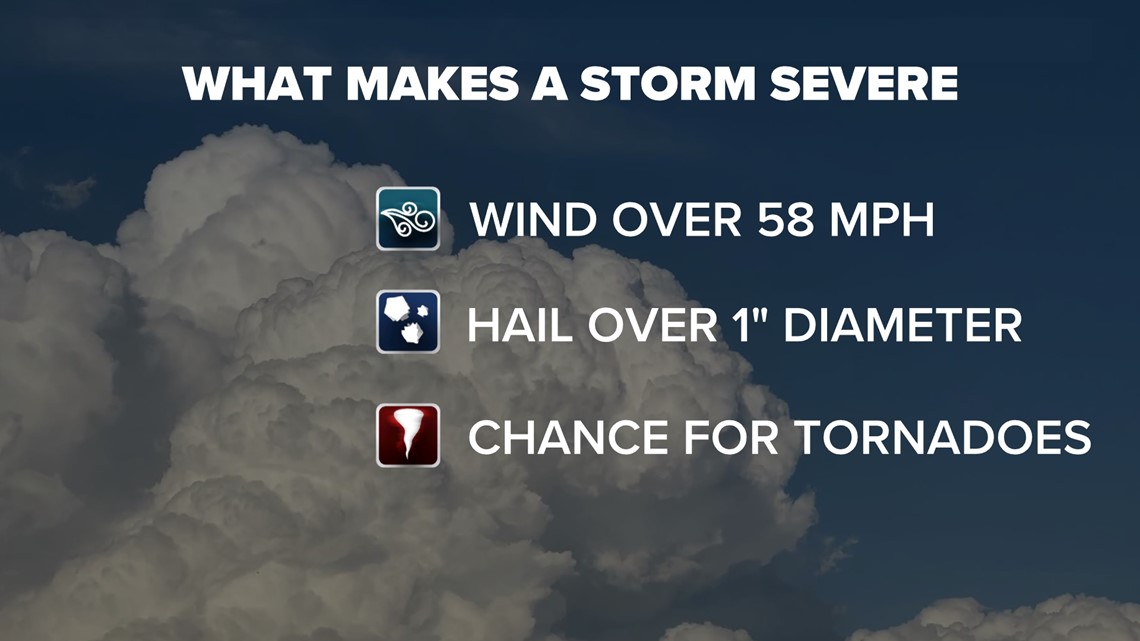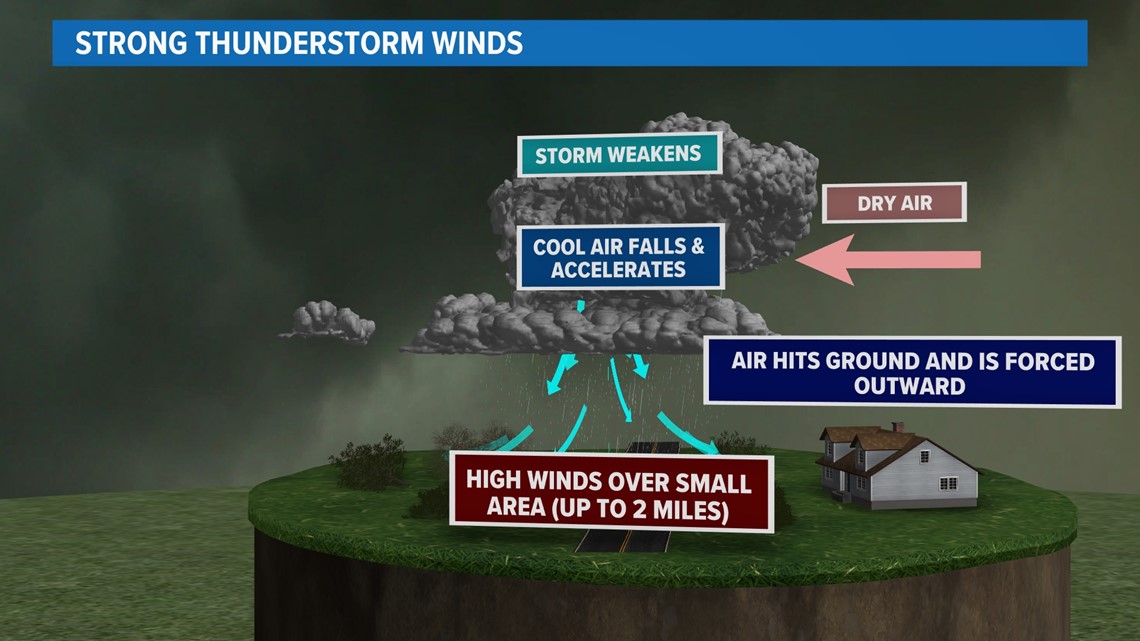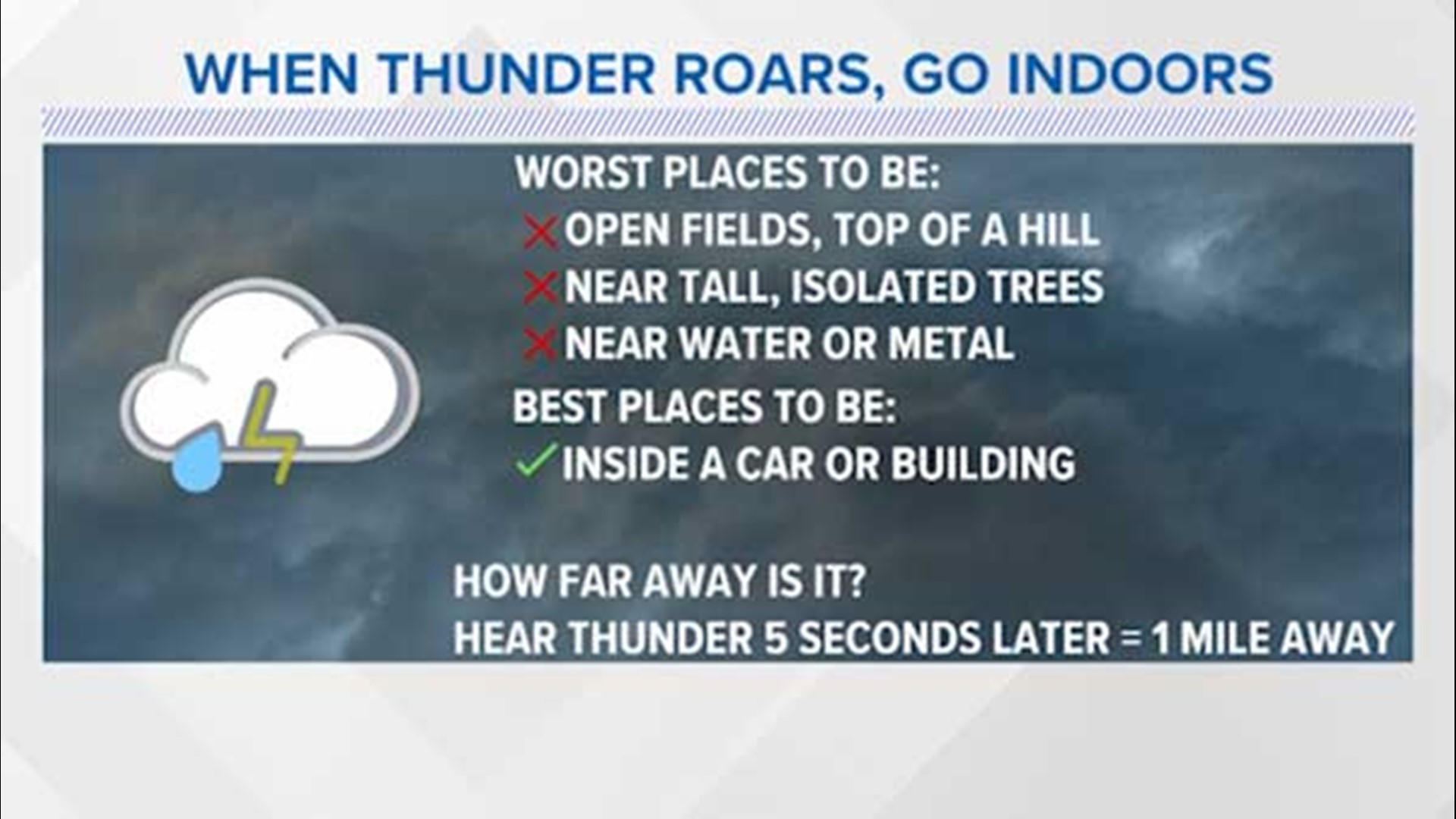HOUSTON — In Southeast Texas, we are no strangers to thunderstorms, which can happen during any time of the year.
So, when does an ordinary thunderstorm become severe? It has to do with a set list of criteria set by the National Weather Service. To be considered a severe storm, a thunderstorm must either produce winds over 58 mph or hail over an inch in diameter. Another obvious qualifier is if the storm is producing a tornado, which we'll cover on Wednesday.


Tornado or straight-line winds?
Severe wind gusts are fairly common with severe storms across Southeast Texas. Big gusts of wind can come out of nowhere and take down trees, and power lines, and do damage to homes.
Sometimes, wind gusts can be so sudden and strong that they are mistaken for tornadoes. However, the straight-line damaging winds are different and can even be more impactful since they cover a larger area. These severe winds form when dry air is pulled into the storm at higher levels in the atmosphere. From there, it cools and becomes more dense, allowing it to accelerate downward. Once that colder air hits the ground, it rushes forward at great speeds, sometimes doing damage.


How hail forms
Wind and violent air motions within a storm are also part of the process which can turn into hail.
Hail is ice stones that form in strong updrafts of thunderstorms. Even though hail is made of ice, it is most common during the hot summer months. The ice forms miles above the ground where the air temperature is cold enough to support water freezing. The size of a hailstone is directly related to the strength of the storm. The stronger the upward motions of air in a thunderstorm, the stronger the storm. The stronger the storm, the larger the hailstones.


What causes lightning?
Finally, the most common aspect of thunderstorms is the reason for their very name: lightning.
Lightning is the cause of thunder and ultimately the very thing that defines a thunderstorm. While lightning is not a requirement for a storm to be severe, the frequency will increase as a storm becomes more intense.
Lightning is a product of midair collisions of raindrops and ice crystals within a storm. As a storm becomes stronger, the motions within become more violent, leading to more collisions and ultimately more lightning.
The most important thing to remember is that if you hear thunder, you are close enough to be hit by lightning: When thunder roars, go indoors.



